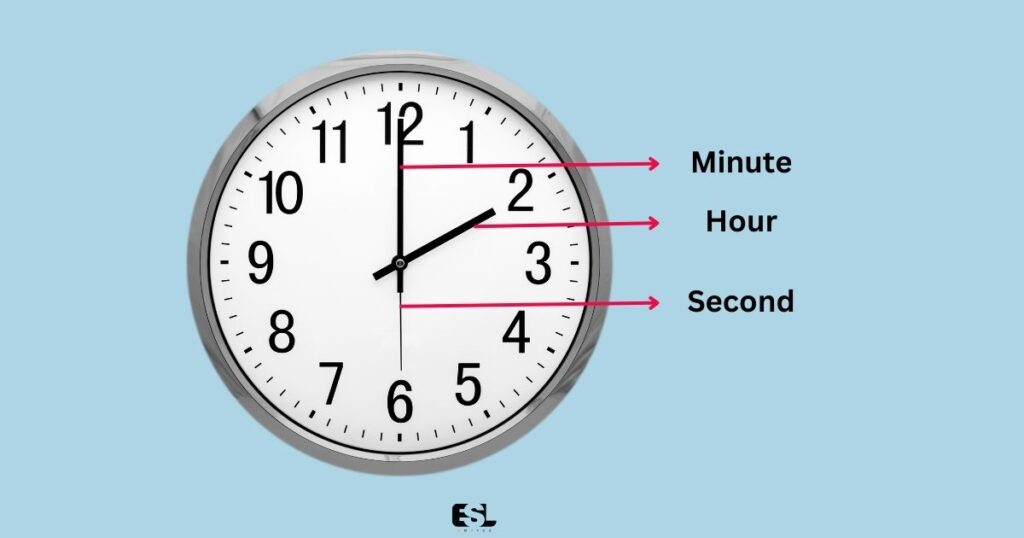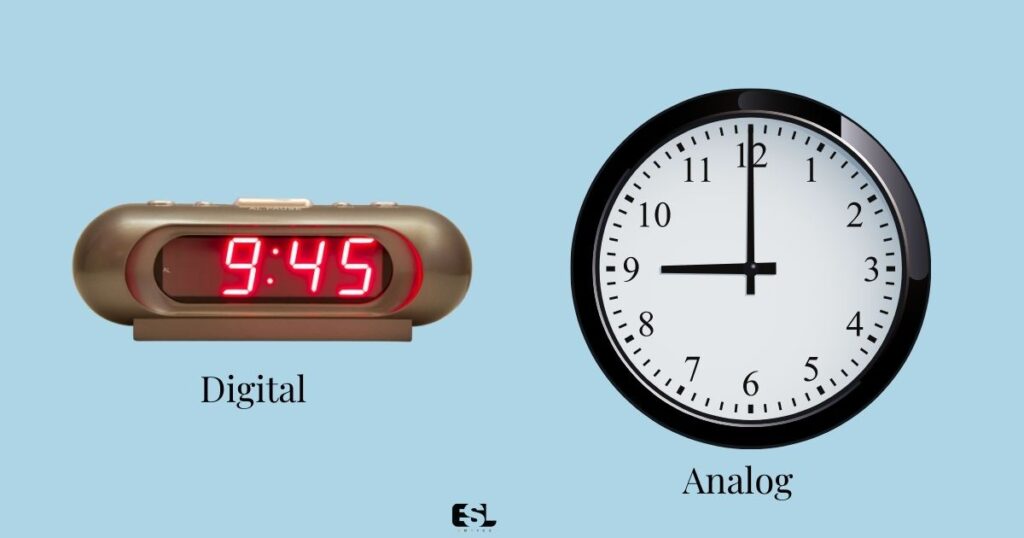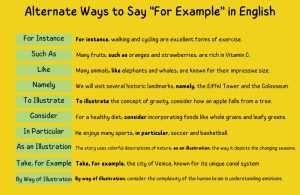There are so many situations in our everyday life when you may need to tell someone the time. It’s common for us to get the question, “What time is it?” However, many ESL speakers sometimes struggle to respond appropriately to this question. Therefore, in this post, I’ll share how native English speakers tell the time when they are asked to.
“It’s six thirty” is the typical format used in informal settings, while “It is half past six” is used in formal situations in response to the question, “What time is it?” However, to spell the time correctly in English, you must first learn how English time is determined.
Are you looking for a book or a guide to help you learn and improve your English? You may try English Made Easy Volume One: A New ESL Approach: Learning English Through Pictures (Amazon Link).
Here, I’ll share the basic concept of time, the different ways of telling the time, and some common English expressions to tell the time to someone.
Table of Contents
- English Expressions of Telling the Time
- 7 Tips on How to Learn Telling the Time
- Different Ways of Telling the Time
- Sample Conversation: Telling the Time in English
- In Conclusion
- 10 Frequently Asked Questions Related to Telling the Time in English
English Expressions of Telling the Time
There are so many ways you can tell someone the time. However, in this part of the post, I’ll share some common and smart ways that you can use to tell the time. To tell the time in English, as an ESL speaker, you should follow these ways.
- Start by stating the hour: “It’s [hour] o’clock.”
- For example, “It’s 3 o’clock.”
- If it is a time between the hours, use the word “past” to indicate the number of minutes past the hour: “It’s [minutes] past [hour].”
- For example, “It’s 10 past 3” means it is 3:10.
- If it is a time approaching the next hour, use the word “to” and subtract the number of minutes from 60: “It’s [minutes] to [hour+1].”
- For example, “It’s 25 to 4” means it is 3:35.
- Use “a.m.” for times from midnight to noon and “p.m.” for times from noon to midnight.
- For example, “It’s 11 a.m.” means it is 11:00 in the morning, while “It’s 9 p.m.” means it is 9:00 in the evening.

Here are some more examples:
- It’s five-thirty.
- It’s five thirty, according to my watch.
- The time is five-thirty.
- Let me check. It’s five-thirty.
- I think it’s around five-thirty.
- It’s about five-thirty.
- I’m not exactly sure, but I think it’s five-thirty.
- It’s almost five-thirty.
- It’s just past five.
- It’s a quarter past five.
- It’s half past five.
- It’s a quarter to six.
- It’s six o’clock.
- It’s just before six.
- It’s still six for a few more minutes.
- It’s five thirty in the morning/afternoon/evening.
- It’s 2:15 p.m. – It’s two fifteen in the afternoon.
- It’s 7:30 a.m. – It’s half past seven in the morning.
- It’s 6:50 p.m. – It’s ten to seven in the evening.
- It’s five on the dot.
- It’s five sharp.
- It’s five exactly.
- It’s eighteen hundred hours in military time.
- It’s five in Pacific/Eastern/Central/Mountain Time.
- I’m sorry, I don’t know the time right now.
7 Tips on How to Learn Telling the Time
To express anything in English, first, you should understand that thing. For example, if you are asked to talk about your profession, you must first know what a profession is and what you should mention while talking about your profession.
Similarly, if you want to tell the time to someone, you should first understand the basic concept of time in English. We know that time is measured in three units: hours, minutes, and seconds. For example, an hour consists of 60 minutes, and a minute consists of 60 seconds.
However, there are some other units, like milliseconds, that we don’t consider in our everyday life. So, I would like to ask you to follow the tips mentioned below to learn how to tell the time.
#1 Learn the Different Parts of a Clock

A clock typically consists of several parts working together to measure and display the time. These parts include:
- Clock face or dial: The clock’s surface displays the numbers or other markings used to indicate the hours and minutes.
- Hour hand: The shorter hand on the clock face that points to the current hour.
- Minute hand: The longer hand on the clock face that points to the current minute.
- Second hand (optional): A thin hand that moves quickly around the clock face and indicates the seconds.
#2 Learn the Difference between Analog and Digital Clocks
Analog clocks are the traditional type of clock with hands that rotate around a circular dial to indicate the time. They usually have a clock face with hour and minute markings and sometimes a second hand. The hands of the clock move continuously and can show the exact time between minutes. Analog clocks are often found in homes, offices, and public places such as schools and train stations.

Digital clocks, on the other hand, display the time using digits or numbers on an electronic display. The time is typically shown in hours and minutes; some digital clocks display the seconds. Digital clocks may be powered by batteries or electricity, often including additional features such as an alarm or a stopwatch. They are commonly found on smartphones, computers, and other electronic devices.
While analog clocks have a classic look and feel, digital clocks offer a more precise and convenient way of telling time, especially in situations where accuracy is important.
#3 Read the Hour
Look at the short hand to determine the hour. The short hand will point to the number that represents the current hour. For example, if the short hand points to 3, it is 3 o’clock.
#4 Read the Minutes
Look at the long hand to determine the minutes. The long hand will point to the number of minutes past the hour. For example, if the long hand points to 6, it is 6 minutes past the hour.
#5 Practice Counting by Fives
The minute hand moves in increments of five, so practice counting by fives to read the minutes. For example, if the minute hand points to 3, it is 15 minutes past the hour (3 x 5 = 15).
#6 Use Digital Clocks
To practice reading digital clocks, look at the numbers displayed on the clock. The first two numbers represent the hour, and the last two numbers represent the minutes. For example, if the digital clock displays 9:45, it is 9:45 am or pm.
#7 Practice, Practice, & Practice
The best way to get better at telling time is to practice. Use clocks and watches around you, and make a habit of checking the time regularly. Start with simple times and work your way up to more complex times.
Remember that telling time is an important skill; you can become proficient in reading analog and digital clocks with practice.
Different Ways of Telling the Time
As there are different types of clocks and time formats, many people get confused about determining the correct ways of telling the time. Therefore, here I’ll share all the forms of telling the time. You may use any of them depending on the context and clock.
#1 The 12-hour Clock
The most common way of telling time in English is by using the 12-hour clock. This clock uses numbers 1-12 to represent the hours, followed by am (morning) or pm (afternoon/evening) to indicate whether it is before or after noon. For example, 4:30 pm would be told as “four thirty in the afternoon.”
#2 The 24-hour Clock
The 24-hour clock is used in many countries around the world, and is also known as military time. It uses numbers 0-23 to represent the hours, and does not use am or pm to indicate whether it is morning or afternoon/evening. For example, 16:30 would be told as “sixteen thirty.”
#3 Digital Clock Format
Digital clocks display time in numbers and are often used in digital devices such as smartphones, tablets, and computers. Depending on the settings, they can display time in either the 12-hour or 24-hour format. For example, 9:15 am or 09:15 would be told as “nine fifteen.”
#4 Saying “o’clock”
When the time is exactly on the hour, it is common to say “o’clock.” For example, 9:00 would be told as “nine o’clock.”

#5 Using Specific Phrases for Specific Parts of the Day
There are some common phrases used to describe specific times of day, such as “morning,” “afternoon,” and “evening.” For example, 10:00 am would be told as “ten in the morning.”
Sample Conversation: Telling the Time in English
Situation: Two colleagues, Sarah and Mark, are planning their day at the office.
Sarah: Good morning, Mark. Do you know what time our team meeting is scheduled for?
Mark: Hi, Sarah. Yes, it’s at half-past ten.
Sarah: Great, thanks. And our client call?
Mark: That’s set for a quarter to two in the afternoon.
Sarah: Perfect. I’ll need to leave at five o’clock on the dot for an appointment. Do we have anything planned after 4:30?
Mark: No, you should be good. The last item on our agenda wraps up at four fifteen.
In Conclusion
I hope these expressions will help you communicate clearly and slowly when telling the time, especially if someone is not a native English speaker. Remember that the way you tell the time may vary depending on the context and the person you are speaking to.
It’s important to practice telling time in different formats to become comfortable with it. Using these different ways of telling time, you can certainly communicate effectively with others and avoid misunderstandings.
Thanks for reading.
Happy learning!
10 Frequently Asked Questions Related to Telling the Time in English
1. What’s the difference between “a.m.” and “p.m.”?
“A.m.” stands for “ante meridiem” and refers to the morning hours, while “p.m.” stands for “post meridiem” and refers to the afternoon and evening hours.
2. How can I express 30 minutes past the hour?
You can use “half-past” (e.g., half-past five) or simply mention the time (e.g., 5:30).
3. What does “quarter past” mean?
“Quarter past” means 15 minutes after the hour.
4. And what about “quarter to”?
“Quarter to” means 15 minutes before the next hour.
5. How can I ask for the current time?
You can ask, “What time is it?” or “Do you have the time?”
6. Is “o’clock” necessary when telling the time?
“O’clock” is used for exact hours, like “three o’clock.” However, it’s not used with minutes past the hour.
7. How can I express time in the 24-hour format?
Instead of using a.m. and p.m., use the full hour and minute, like “14:30” for 2:30 p.m.
8. How can I specify time zones in English?
You can mention the abbreviation or the full name, like “EST” for “Eastern Standard Time.”
9. What does “midnight” and “noon” refer to?
“Midnight” is 12:00 a.m., and “noon” is 12:00 p.m.
10. What’s the phrase “in the nick of time” mean?
It means just in time or at the last possible moment.





